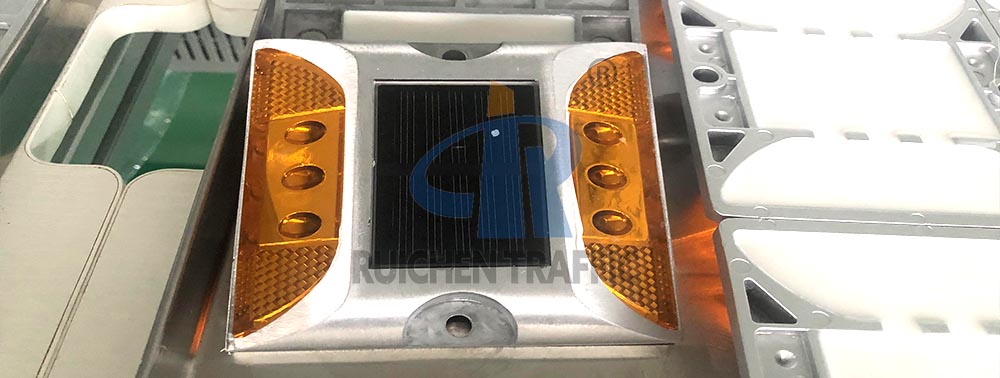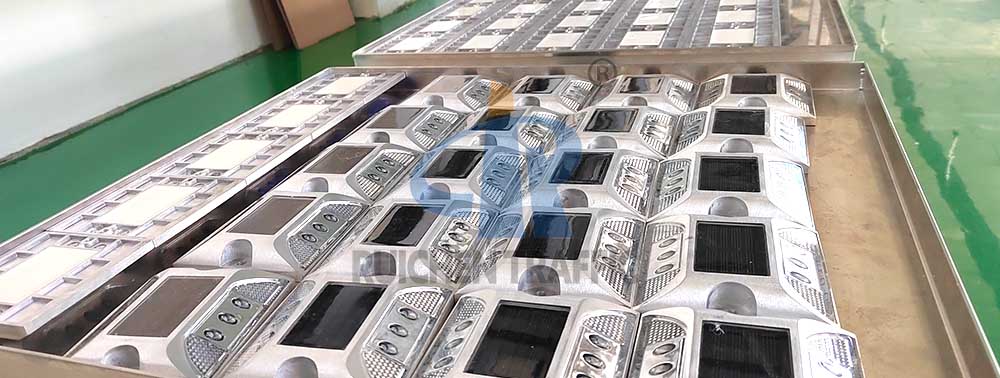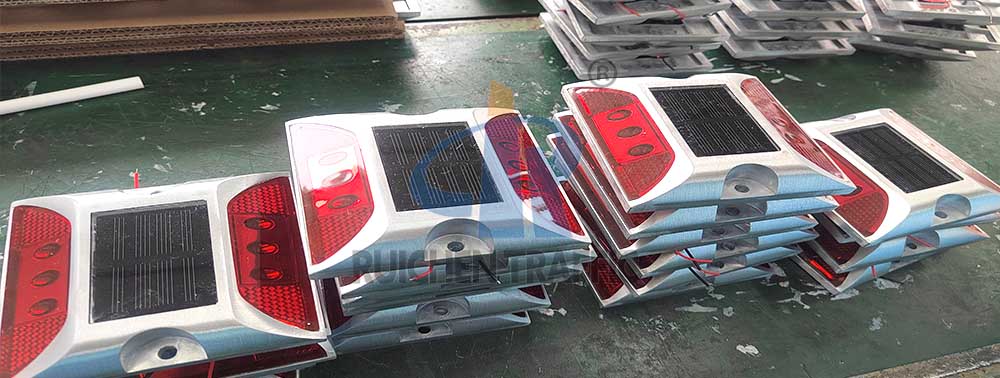There are obvious differences between embedded and raised
Solar Road Studs in many aspects, which are mainly reflected in the installation location, compression resistance, appearance, use effect and application scenarios. The following is a detailed analysis of these differences:
1. Installation location
Embedded: Generally used in the center line of the road, because the center line position has particularly high requirements for the compression resistance of the
road studs. In order to solve the compression resistance problem, the embedded
Solar Road Studs are designed to be mostly buried in the ground, with only a small part (such as about 5 mm) exposed above the ground.

Raised: It is mostly used on the edge line of the road. The requirements for compression resistance at these locations are relatively low, so the raised
Solar Road Studs can protrude from the ground and still work effectively.
2. Compression resistance
Embedded: Because it needs to withstand greater vehicle rolling and impact, the embedded
Solar Road Studs pay more attention to compression resistance in design to ensure its stability and durability during use.
Protruding type: Although it also needs to withstand a certain amount of pressure, its pressure resistance requirement is lower than that of the buried type. However, high-quality protruding
Solar Road Studs also have excellent pressure resistance. For example, some products can withstand up to 38 tons of pressure through the use of reinforced rib design and high-quality materials.

3. Appearance
Buried type: Most of it is hidden underground, with only a small part exposed for luminescence or reflection, so its appearance is relatively simple.
Protruding type: It obviously protrudes from the ground, and the appearance is more conspicuous. Some products also use a streamlined design, which is both beautiful and decorative.
4. Use effect
Buried type: Because it is flush with the ground, it will not cause obvious interference to vehicle driving, but the luminous or reflective part is small, which may affect the recognition effect at night or in low light conditions to a certain extent.
Protruding type: Because it protrudes from the ground, it is easier to be noticed by the driver, especially at night or in low light conditions, its luminous or reflective effect is more significant, which helps to improve the safety and visibility of the road.

5. Application scenarios
Buried type: more suitable for installation in the center of the road where high pressure resistance is required, such as highways, urban main roads, etc.
Protruding type: widely used in places such as road edge lines, intersections, sidewalks, parking lots, and areas where road visibility needs to be enhanced at night or in low light conditions.
In summary, there are obvious differences between buried and protruding types of
Solar Road Studs in terms of installation location, pressure resistance, appearance, use effect, and application scenarios. When choosing which type of
Solar Road Studs to use, comprehensive consideration should be given based on specific needs and actual conditions.


